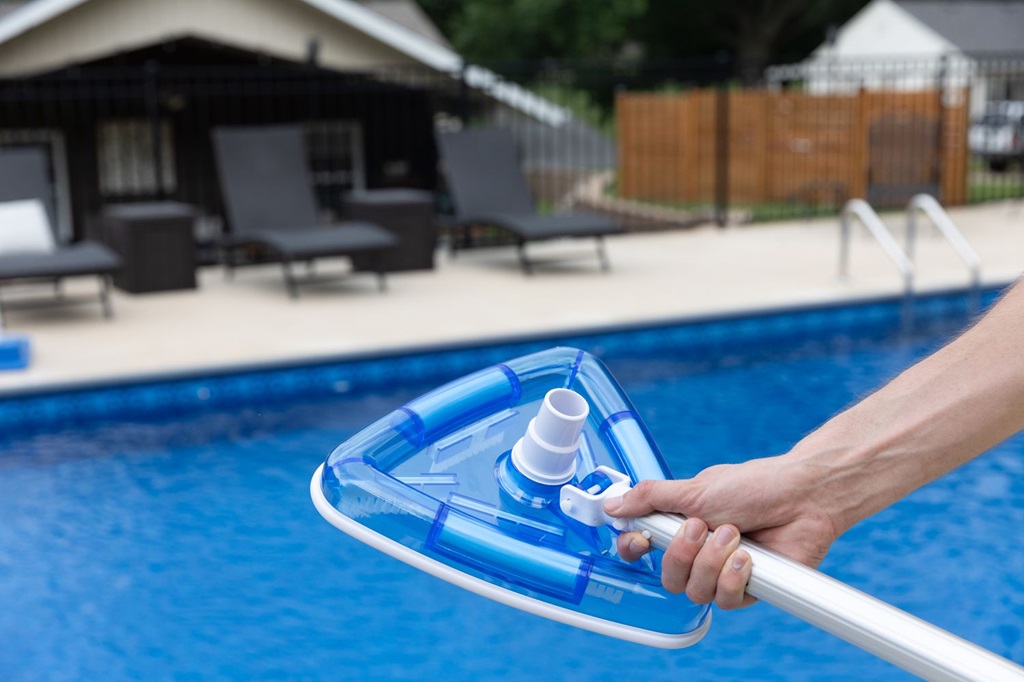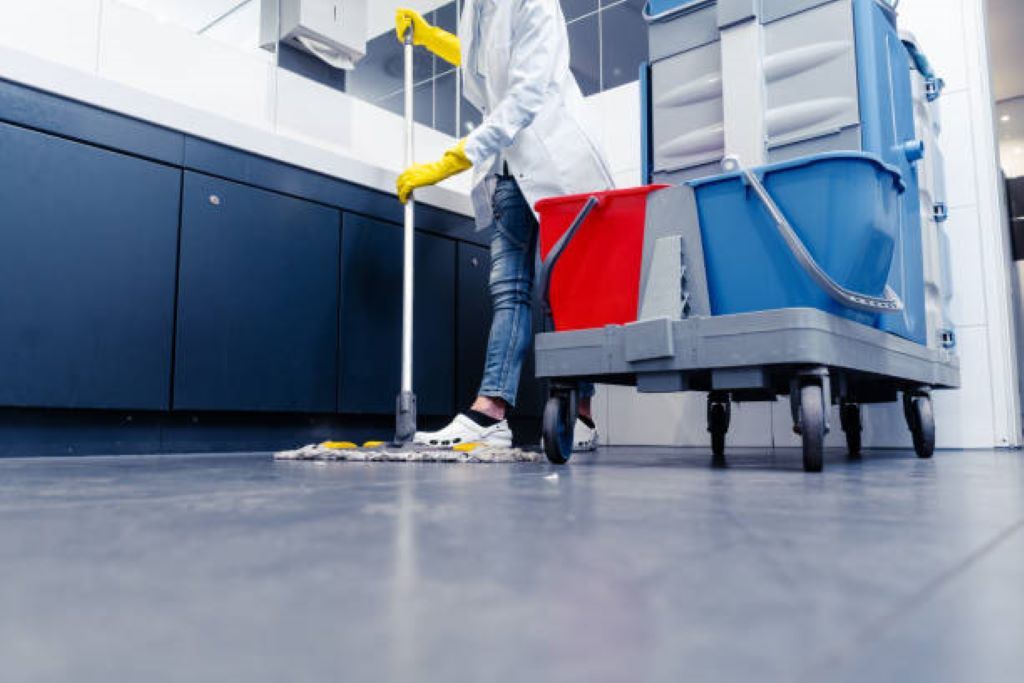Are you tired of dealing with a slow-draining sink? You must have ideas on how to clean a drain with baking soda and vinegar. Clogged drains can be a real hassle to deal with. But don’t worry, there are a couple of simple and cost-effective solutions that you can try at home. You might already have the ingredients in your pantry – baking soda and vinegar. These two household items can be used to create a powerful homemade drain cleaner that can help you get rid of clogs and keep your drains flowing smoothly.
When combined, these two ingredients create a bubbly chemical reaction that breaks down gunk and clears out buildup in pipes. I rely on this DIY drain cleaner to keep my sinks and tubs running freely. Allow me to share how to put baking soda and vinegar to work unclogging your drains.
Why Drains Get Clogged in the First Place
Before jumping into the baking soda and vinegar process, let’s quickly cover what causes drains to get backed up. That way, you can help prevent clogs in the future.
Drains clog up over time due to the accumulation of various materials inside your pipes. The culprits include:
- Hair and soap scum—Ever notice globs of hair and soap clinging to your shower walls? Eventually that stuff washes down and sticks to the pipes.
- Food particles and grease—Leftover scraps or oily residues collect over time.
- Hard water deposits—Minerals in the water solidify into scale on the pipe walls.
- Tree roots (for exterior drains)—Roots grow towards moisture and can invade pipes.
As you can imagine, this sticky mixture of gunk, grime, and solids starts to narrow pipes, impeding water flow. So our goal is to break up and dislodge this built-up crud. Enter baking soda and vinegar.
Why Use Baking Soda and Vinegar as Drain Cleaners?
You’re likely familiar with baking soda and vinegar separately. Baking soda or sodium bicarbonate is a mild base. It has all sorts of household uses, from deodorizing the fridge to whitening teeth. Vinegar is an acidic liquid also utilized around the home for cleaning, polishing, and food preservation.
But why use them together specifically for drains? It comes down to the chemical reaction between an acid and a base.
When vinegar and baking soda mix, they create carbon dioxide gas bubbles, just like when making a science fair volcano. All those fizzy bubbles help dislodge and push through gunk that’s stuck to your pipes.
Plus, these ingredients are gentle enough on pipes but tough on grime. And they’re so inexpensive compared to commercial drain cleaners filled with harsh toxins.
For light clogs, sometimes the bubbles alone can break up just enough blockages for water to start draining freely again. But for more stubborn obstructions, we need to take a few extra steps to ensure success.
Let’s walk through the full process.
How to Unclog a Drain with Baking Soda and Vinegar
Here is a simple, step-by-step method for using baking soda and vinegar to dissolve gunk and clear out drains:
What You Need
- Baking soda
- White vinegar
- Funnel (optional)
- Kettle or pot of boiling water
- Plumber’s snake (optional)
Step 1: Pour Baking Soda Down the Drain
Start by pouring 1⁄2 cup of baking soda down the clogged drain. You can use a funnel if it’s easier to direct the baking soda into the opening.
The baking soda will sit on top of the gunk. Next comes the vinegar to activate the bubbly reaction.
Step 2: Add Vinegar
Pour 1 cup of white vinegar down the drain on top of the baking soda. If you’d like, give the opening a quick cover with a stopper or rag to help contain the reaction.
You’ll hear the satisfying hiss and fizz of carbon dioxide bubbles forming. This is the chemical reaction doing its work to break up and push through blockages.
Step 3: Let It Sit
After a few minutes of bubbling activity, the reaction will die down. This is when patience comes into play. For best results, let the mixture sit for 5-15 minutes so the ingredients can fully dissolve and dislodge the gunk.
While waiting, you can boil some water as the next step. Just don’t leave the house with the water on!
Step 4: Flush with Boiling Water
Boiling water acts as the finishing touch to wash away the remaining particles loosened by the baking soda and vinegar.
Once your kettle or pot comes to a rolling boil, carefully pour it down the drain. The hot water should immediately start breaking up what’s left of the clog on its way down the pipes.
If the basin starts to fill up as the water goes down, use a plunger to gently plunge a few times and push through the rest of the gunk.
Step 5: Repeat as Needed
If your drain still seems sluggish, give it another round or two of baking soda, vinegar, and boiling water. Sometimes extra attention is needed for persistent clogs.
For bathroom sinks, consider removing and cleaning the P-trap under the basin. This U-shaped curve fills with gunk easily. As a last resort, use a plumber’s snake to hook deeper clogs.
And voilà! With some bubbly chemistry and hot water, you can banish those annoying clogs!
Variations for Other Drains
While the steps are largely the same for any drain, you’ll need to adapt the method slightly depending on the specific clog situation.
Here are some variations for other common clogs around the home:
Kitchen Sink Drains
Kitchen sinks deal with lots of food particles and grease going down the pipes. If your kitchen sink is draining slowly, double the amounts of baking soda and vinegar used:
- 1 cup baking soda
- 2 cups vinegar
- Follow with plenty of boiling water
Then sanitize the sink when done to prevent future backups.
Main Sewer Line Clogs
For a main sewer line, a blockage affecting the whole house, head outside and lift the manhole or clean out the cover. Pour 1 cup baking soda down the line followed by 1 gallon of vinegar. Let it bubble for 10-15 minutes then flush with hot water.
Bathtub Drains
Bathtub drains often get strands of hair and soap scum causing issues. After using baking soda and vinegar, remove the overflow plate cover inside the tub and use needle-nose pliers to pull out hair caught behind it.
Outdoor Drainage Areas
Use baking soda and vinegar to clear debris from window well drains, patio/garage floor drains, and driveway trench drains. Adapt amounts as needed based on drain size. Place a mesh screen over outdoor drains afterward to prevent future leaf/sediment blockages.
Tips for Preventing Future Clogs
Unclogging drains is rather tedious work. Let’s go over some ways to help avoid clogs in the first place through some simple habits:
- Use drain catchers. Install mesh drain catchers or stoppers in the tub and sink drains to trap hair, food, and other debris before going down pipes. Clean them out regularly.
- Rinse dishes first. Don’t let large food scraps go down the kitchen sink. Rinse dishes beforehand and wipe out greasy pans.
- Take shorter showers. Quicker showers mean less hair and soap scum washing down drains over time.
- Flush responsibly. Don’t flush anything besides toilet paper. Items like tissues, cotton swabs, and feminine products can jam pipes.
- Mind the garbage disposal. Use it sparingly and don’t put in egg shells, grease, potato peels, pasta, rice, and other things that can clog.
- Pour oils into the trash. Don’t pour fats, oils, or grease down drains. Allow to cool and put oil in the garbage instead. Wipe down pans first.
- Use drain cleaner monthly. Once a month, pour baking soda and vinegar or an enzyme cleaner down drains to help prevent buildup.
A little mindful attention goes a long way towards keeping drains clear for years. But when clogs inevitably occur anyway, now you’re armed with the baking soda and vinegar unclogging technique.
FAQs
Is it safe to mix baking soda and vinegar?
Yes, baking soda and vinegar are completely safe when combined or used separately around the home. This combo simply produces a fizzy chemical reaction that dislodges clogs.
How long does the baking soda and vinegar process take to clear a clog?
It depends on the severity of the clog but give it at least 15 minutes to fully clear drains. Repeat the treatment if the water still moves slowly after one round. The boiling water flush helps wash away any residual gunk.
Can I use baking soda and vinegar in all drains?
Yes, it’s safe for all metal and plastic drain pipes and plumbing like sinks, tubs, main lines, and outdoor drains. The mixture helps break up blockages without damaging fixtures. Just adjust the amount based on the severity of clogging issues.
Why do I need boiling water if the vinegar already causes bubbles?
Excellent question! The chemical reaction of baking soda and vinegar helps break up chunks of stuck-on gunk and hair. But residue likely remains along pipe walls. Hot water helps wash away those smaller particles for fully clear drainage.
Should I use a plunger after using baking soda and vinegar?
Absolutely! After adding the mixture and flushing with hot water, use a plunger to help push through any remaining particles still in the pipes. Cover the drain opening tightly with a stopper or rag to plunge vigorously. It helps move things along.
The Takeaway
Hopefully, the frustrations of slow-flowing drains are behind you now. As you saw, baking soda and vinegar do make an effective and affordable DIY drain cleaner. They’re items you probably already have at home, too.
With a few minutes of mixing, waiting, and flushing, you can banish that problematic sludge and gunk out of pipes for good. Here’s a quick recap:
- Combine 1⁄2 cup baking soda + 1 cup vinegar → fizzy chemical reaction
- Let sit for 15 minutes to break up and dissolve the gunk
- Flush with boiling water to wash debris away
- Use a plunger to help push through the remaining particles
Rinse and repeat if needed for extra stubborn obstructions. Then, implement some of those clog-prevention habits moving forward.
I hope this guide gave you the confidence to handle sluggish drains using ingredients from the pantry. No more reaching for harsh chemical cleaners or paying for a plumber. Baking soda and vinegar should be your go-to for fighting sink and tub clogs!




